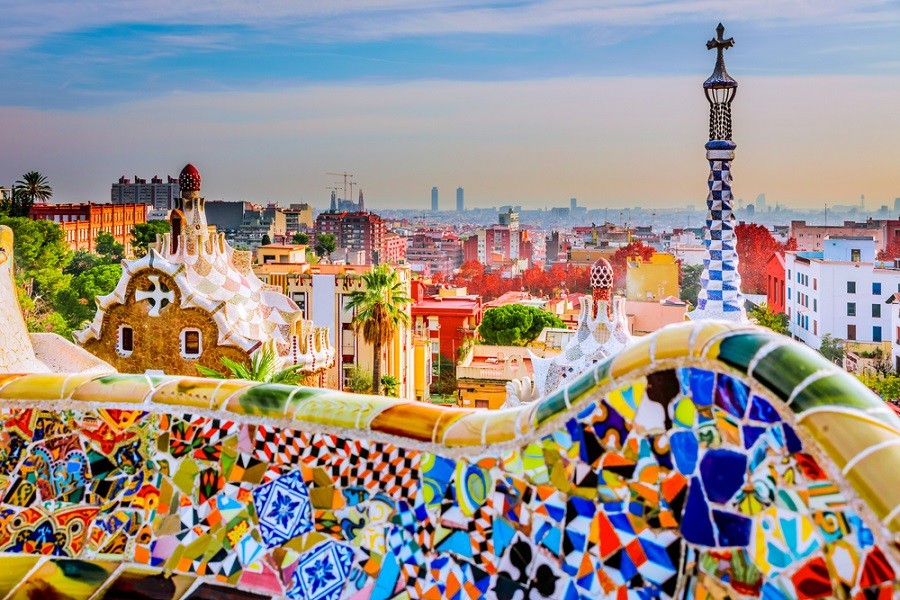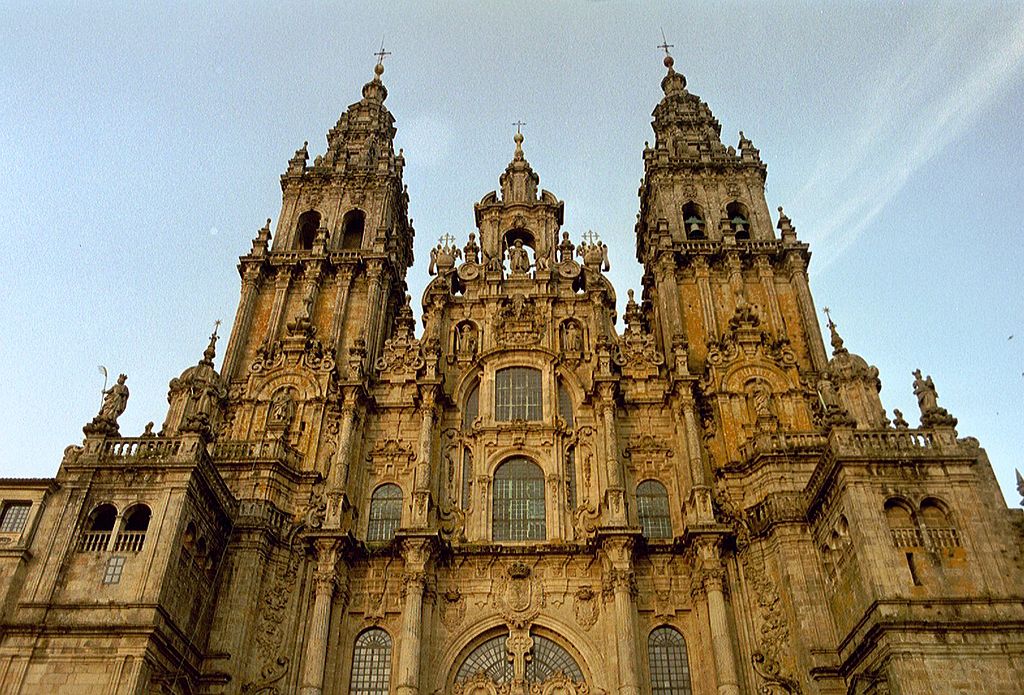I’ve
had an interest in Spain for quite a while. And my kids go to a Spanish
immersion magnet elementary school (well, my daughter finished and is now in
middle school). Their math and science classes are taught in Spanish, and most
of their Spanish teachers come from Spain. (However, I think most of the
Hispanic students who attend are from Latin America.) A few years ago, I read
James Michener’s Iberia, which gave a
history of many of the key areas around Spain.
The
Spanish name for the country, España, is a little unclear on its origin but is
generally thought to have stemmed from some kind of Phoenician or even some
Greek-influenced one. There are quite a few theories out there, and everyone probably
thinks theirs is the right one.
Spain
is located in the southwest corner of Europe, on the Iberian Peninsula. It’s
bordered by Portugal to the west and France to the north. The country of
Andorra lies in the Pyrenees between Spain and France, while the British
territory of Gibraltar (where the famous Rock of Gibraltar is) lies on the
opposite end of the country. Spain also has several islands (mainly the
Balearic Islands in the Mediterranean Sea and the Canary Islands in the
Atlantic Ocean off the coast of Morocco) as well as a few exclaves bordering
Morocco (Ceuta and Melilla). Spain’s climate can vary, depending on where you
are and how high in the mountains you are. They have either a Mediterranean
climate, semi-arid, or oceanic climate.
 |
| Ceuta |
The
earliest people in this area were the Celts, Basques, and Iberians, followed by
the Phoenicians and Carthaginians before being incorporated into the Roman
Empire. It became Gothic during the Middle Ages (as opposed to being Goth), and
then Muslims from North Africa crossed the Mediterranean and took over the land
for themselves. It essentially became a Muslim state, and many of the existing
cathedrals were either torn down or redesigned as mosques. Although
Christianity was restored after the Spaniards eventually kicked them out, there
are several Spanish words of Arabic origin (sukkar
– azúkar – sugar; azzayt – aceite – oil). Isabella I of Castile and
Ferdinand II of Aragon got married and Spain basically reunited. They hired an
Italian named Christopher Columbus (as we call him in English) to find a way to
Asia, which ended up one of the biggest screw-ups in history. He found islands,
sure, but they were in the Caribbean, which he promptly claimed for Spain. But
he also killed off practically everyone already there through torture and
disease, raping and pillaging. But it began Spain’s conquests (i.e. stealing)
lands in the Americas. Other Spaniards did end up making it to Asia and took
over the Philippines and stopped by quite a few other islands as well. During
the 1550s, they also made their way around the bottom of Africa. And of course,
none of this was done without fighting and arguing with the British, the
French, and the Dutch who were all doing the same thing. The 1700s and 1800s
were nothing but strife between Spain and France, especially against Napoleon,
which left Spain reeling from the impacts of it all. They lost a lot of the
land they had accumulated, including Cuba toward the end of the century. While
the Second Republic of the 1920s caused a bit of political and social turmoil,
they also established universal suffrage. And then came WWII. Francisco Franco
put Spain in the same club as Nazi Germany, Fascist Italy, and Communist
Russia. When Franco died in 1975, the country began the process of becoming a
democracy again. In recent decades, there have been movements for certain
minority areas to gain its own autonomy, namely the Basques and Catalonia, but
none have succeeded yet. In 2005, Spain joined a handful of countries to
legalize same-sex marriage.
 |
| This guy had an obsession with statues of himself on horseback, the last of which were taken down in 2008 (33 years after his death). |
Located
on the River Manzanares, the capital city is Madrid. This city is pretty much
right in the center of the country. It’s generally hot in the summers with
plenty of sunshine to mild in the winter. Not only does the city serve as the
nation’s center of government, but it’s also a hub for transportation, commerce
and finance (many multinational companies have branches here), media, culture,
education, sports (including bullfighting), and entertainment. Madrid is
especially known among the art world for its famous Prado Museum, but there are
numerous other art museums and galleries spread throughout the city.
Spain
has a mixed economy but also has a somewhat high unemployment. Many Spanish
companies have risen to international levels, especially with Latin America and
Asia. Spain’s known for certain agricultural products: olive oil, wine, olives,
cereal grains, citrus fruits, grapes, cotton, and other fruits. It’s also the
second most visited country in the world. In fact, the main office for the
World Tourism Organization is located in the capital. Cities like Madrid,
Barcelona, Leon, and Castile remain top cities for tourism.
Roman
Catholicism is still the dominant religion in Spain, although it’s not an
official religion anymore. It still has a long history in Spain, and there have
been four Popes from Spain. Even though 70% identify themselves as Roman
Catholic (and most of those people don’t even attend church at all), nearly a
quarter of the people say they have no religion at all. The rest of the people
are either Protestant, Jewish, Muslim, or some other Asian religions. There
used to be quite a few Jews in Spain until they expelled them all in 1492 until
about the 19th century. However, if you can prove you were part of
the Sephardic Jews that were kicked out in 1492, then you can request Spanish
nationality. I can’t even find my college IDs from 20 years ago.
Not
surprising that Spanish is the official language of Spain. The version
considered the official version is also called Castilian Spanish. However,
there are also other languages that share that official status: Catalan (which
I think is like a cross between Spanish and Portuguese), Galician, Basque, and
Occitan. Other minority languages include Aragonese in Aragon and Astur-Leonese
in León.
I
was looking through a list of famous people from Spain, and it was rife with
actors, musicians, artists, explorers, filmmakers, writers, athletes, and
scientists that I didn’t always realize who were from Spain. They have
contributed and shaped the world as we know it (whether for good or bad, it is
what it is). I’m excited to take a closer look at a country I’ve been
interested in (and from the point of view of moving to).
Up
next: art and literature






No comments:
Post a Comment